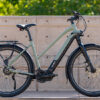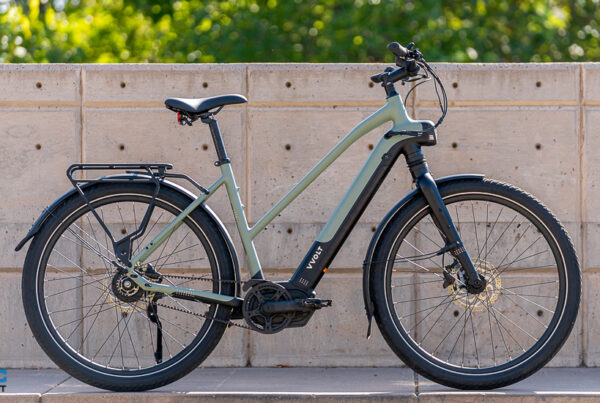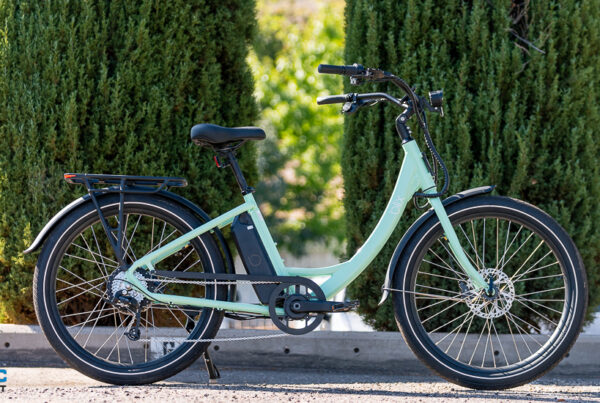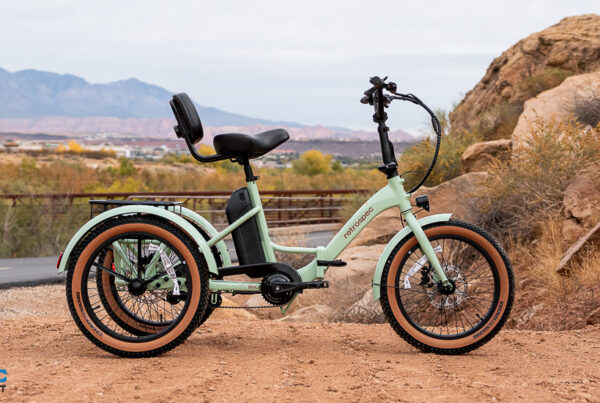When you classify an e-bike as “fast,” you need to clarify as fast has its own spectrum. That can range from controllable and fun, to wild and scary. The Aventure 2 is a fast e-bike that’s easy to manage and is loads of fun.
What you’ll notice from the graph above is that the Aventure 2 moves quickly with motor help, and speeds seem to cluster together a bit across the assist levels. This is largely due to two factors: I pedal a tad aggressively, and a torque sensor is designed to match your effort level.
With the circuit test data we’ve collected over the years and several EBR reviewers to compare myself to, I typically see one or two miles per hour speeds faster on the no-motor lap than most of my EBR colleagues. This yields a 17.3 mph Eco lap for me, while John gets somewhere closer to 14 mph. Remember, the beauty of a torque sensor is the bike wants to meet you where you’re at, which blends the fun of being able to charge hard if you want with the option of taking a more gradual pace for a pleasant cruise.
Now, we have a “test ‘em as they ship ‘em” policy we’ve adopted when it comes to our testing. So while the Aventure 2 comes as a class 2 e-bike, it can be adjusted to class 3 speeds of 28 mph in the Aventon app that pairs with your bike. As a bit of a bonus lap I did change the Aventure over to class 3 (like I said, I’m a bit aggressive) and took the circuit one more time in Turbo mode. In that setting it achieved my third fastest lap on the circuit to date (only losing out to two different 1000W mid drive speed demons). I feel like I learned two key things about the Aventure 2 on that final lap.
First, this bike handles speed well and allows for a high degree of confidence. Typically 22 or 23 mph is the end of my comfort limit on most e-bikes I test. Many of them rattle and vibrate a bit or can feel twitchy in not-so-great ways that cautions me from going much faster. But the Aventure 2 felt so solid beneath me that I approached the 28 mph class 3 limits with ease. It’s an advantage the 77 lbs of heft and 4” wide tires can provide.
Finally, another subtle change from the original Aventure was a larger front chainring on this model – the 46t is now a 48t instead. While the rear cassette has switched from the Shimano Acera to the Shimano Altus, it is still the same range of 12-32. The expanded gearing did feel subtly better, and I couldn’t detect any ghost pedaling all the way up to 28 mph. In combination with the torque sensor, the gearing allows for a good feel even in high speeds on a flat course.
My overall takeaway from the circuit test was the Aventure 2 handles well as either a class 2 or class 3 e-bike. Riders will find manageable speeds with four levels of assist. Each level takes a little more of the edge off as you climb through the assist modes, but the bike never takes a positive pedal experience away.
Source link








